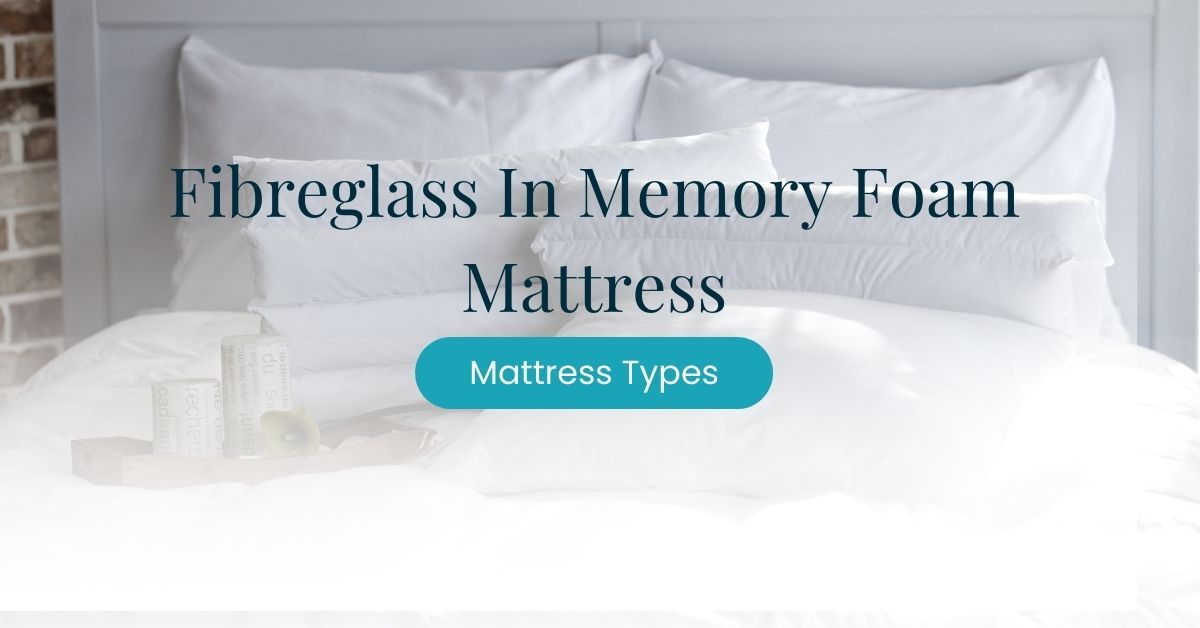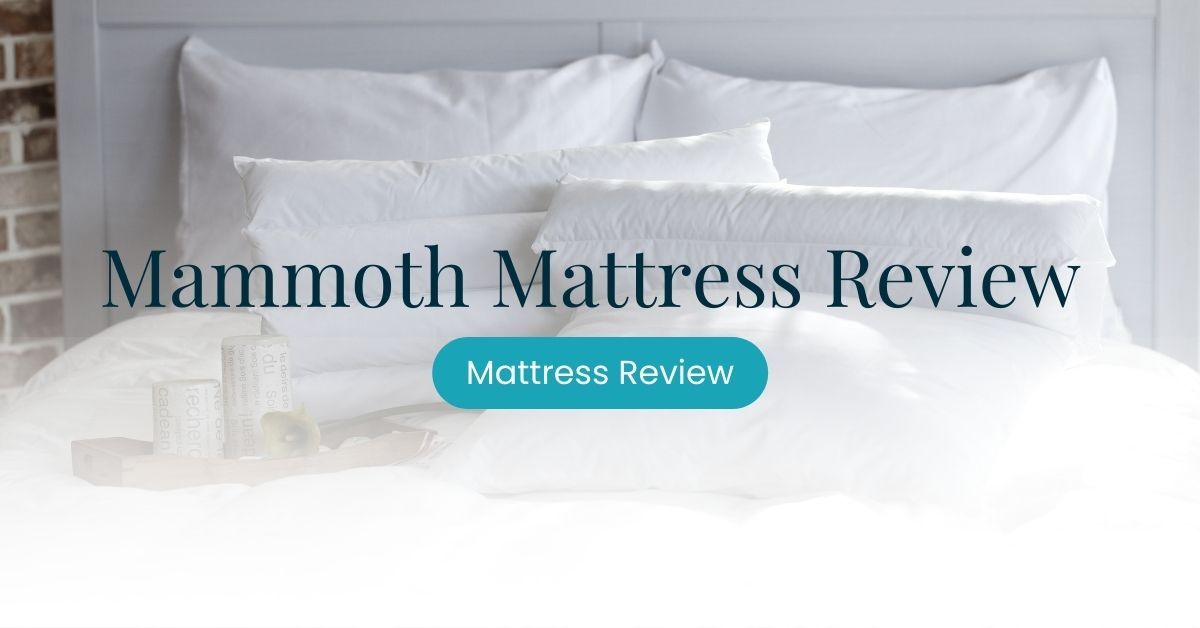It can be terrifying to know that your mattress may contain fibreglass – especially when you hear of the lawsuits against mattress companies who use fiberglass in mattresses.
Whether you spell it fibreglass or fiberglass (the American English spelling) – you should know why you should avoid mattresses with this glass wool material.
Exposure to glass fiber particles can cause health problems, including coughing, eye itchiness, and throat irritation. If not handled properly, fibreglass particles can also be hard to contain if released into the air since they are nearly invisible to the naked eye.
But what does fibreglass in your mattress mean? Why is it dangerous, and why should you care? Let’s first remind ourselves what fibreglass is and why it’s used in mattress production.
Why Do Memory Foam Mattresses Have Fibreglass In Them?
The use of fiberglass in mattresses mainly to comply with fire safety regulations such as US 2007 Consumer Product Safety Commissions and UK Consumer Protection. Fibreglass, as a fire retardant, works efficiently.
It’s also used to make memory foam more durable and improve the support as it helps to reinforce the polyurethane foam.
There’s a video below where you’ll see how it stops memory foam from catching fire. Aside from its effectiveness, fibreglass is also cheap for manufacturers.
What Are The Risks Of Using Fibreglass?
In mattress application, fibres of glass are arranged into a texture similar to wool to maximise thermal insulation. But these glass fibres pose a great health risk.
While it is not classified as a toxic or cancerous substance, short-term exposure through contact or breathing can irritate the skin, eyes, nose, and throat and lead to
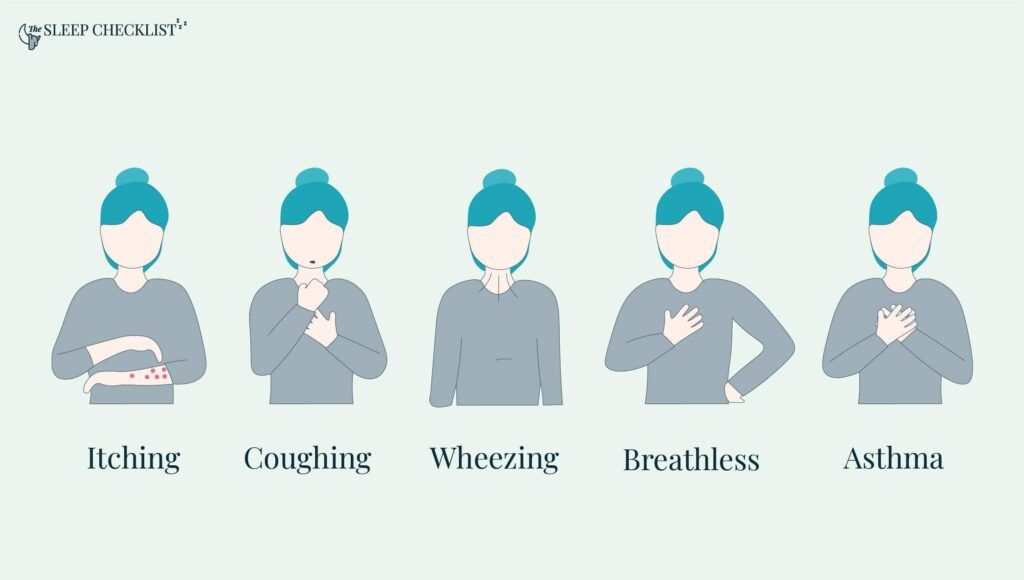
- itching
- coughing
- wheezing
- breathlessness
- asthma or bronchitis-like conditions.
A study conducted on 102 workers from a microfiber factory and 76 office workers concluded that workers exposed to glass microfibers experienced an increased risk of coughing, wheezing, breathlessness, nasal issues, and skin symptoms.
Aside from health risks, fibreglass particles can be hard to contain when not handled properly. These fine particles can end up in your bedding, clothes, and all over the house.
Watch this 3-minute video to glimpse into the horrors fibreglass can bring!
Alternative Fire Retardants Commonly Used
Aside from fibreglass, other fire retardant chemicals and non-chemical products are used in mattresses to create a fire barrier. Even though there are safe fire retardant options, some manufacturers still use flame retardant chemicals that are more convenient and cheap. Unfortunately, most of them are toxic, and include polybrominated diphenyl ethers (PBDEs), boric acid, antimony trioxide, decabromodiphenyl oxide, melamine and vinylidene Chloride
The USA State of California has recently passed the Assembly Bill AB-2998 which restricts flame retardant chemicals on furniture, including mattresses, from 2020.
And on the bright side, some manufacturers use safe and natural materials as fire-retardant, such as
- organic wool
- natural latex
- organic cotton mixed with rayon and polyester
How Can I Tell If My Memory Foam Has Fibreglass?
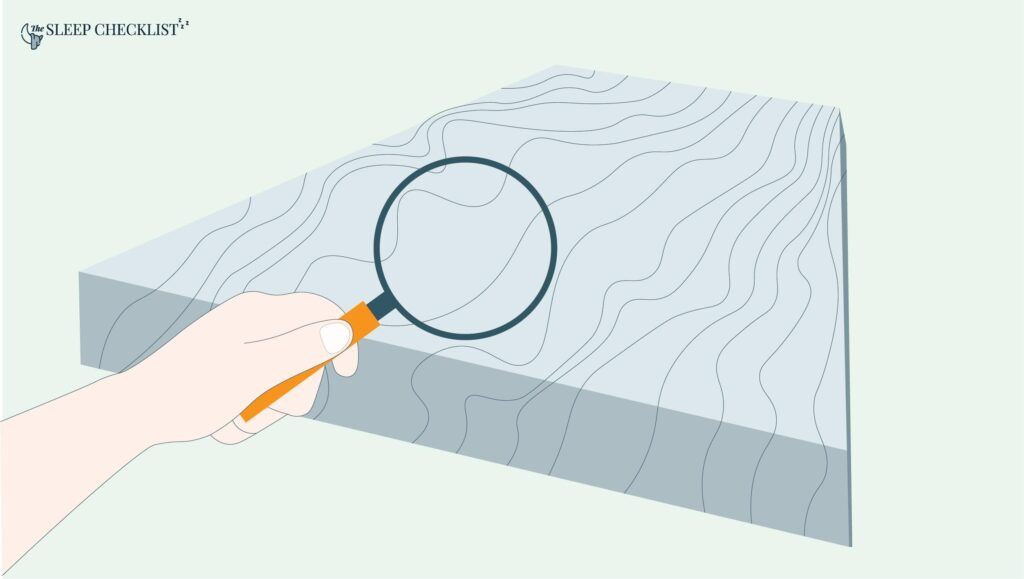
A compromised fiberglass mattress when torn or damaged will leave sparkly particles all over the floor and mattress itself. If you notice these sparkly particles, it likely contains fibreglass. But, what happens if you don’t have a torn mattress?
Check The Mattress Label.
The mattress tag should contain words like
- “X% fibreglass”
- “X% glass wool”
- “X% glass fibre”
- “Do not remove the cover.”
Mattress manufacturers would typically (and should) warn people that they shouldn’t be removing the mattress cover as it will expose the glass fibres in the air.
Was Your Mattress Really Cheap?
Mattress manufacturers opt to use fibreglass as it’s inexpensive. If your mattress is more affordable, like £200 for a queen-sized bed, check the label before purchasing. These mattresses are usually made in countries with fewer regulations regarding the usage of fibreglass.
Is It Safe To Sleep On A Mattress With Fibreglass?
If you’ve identified that your mattress contains fibreglass but don’t have the budget for a new one, you can still use your mattress with extra care. But, exposed fibreglass is a no-go and do not sleep on your mattress.
Don’t Remove The Mattress Cover.
Mattress labels should state the instruction, “Do not remove the cover,” as this will expose the fibreglass particles.
Even if the mattress cover has a zipper, do not remove the mattress cover if it is specified. (Yup, some mattresses with fibreglass come with a zippered mattress cover.)
Use A Mattress Protector.
Not removing the main mattress cover should be enough. Still, you may use a mattress protector to prevent tears or exposure to the fibreglass layer for your peace of mind. Here are some mattress protectors you can check out:
What To Do If You’re Exposed To Fibreglass?
If you’re at this point that you’re already exposed to fibreglass, seek a medical doctor immediately. Here are the symptoms of being exposed to fibreglass:
- Shards of glass in/on the skin
- Irritated skin
- Small cuts
- Rashes
- Itching
- Coughing
- Wheezing
- Breathlessness
Washington State Department of Health stated that smaller fibres can be removed from the body through sneezing or coughing due to your body’s defence mechanisms. Ingested fibreglass is eventually removed from the body via faeces.
While the glass fibres can naturally come out of the body for some time, it is best to seek immediate help to relieve the symptoms.
How Do You Clean Fibreglass Contamination?
Fibreglass will look like sharp, sparkly, and glitter-like pieces on surfaces when seen by the naked eye. If you’ve watched the video above, you can see the damaged fibreglass has caused to the family. Fibreglass is hard to clean once it gets to every corner of your room and fabric surface. More so, it’s in the air you breathe.
Fibreglass can go as small as 1 micron (µm), and like pollens and small dust, fibreglass can stay in the air for some time before settling.
Vacuum Fibreglass Using A HEPA Filter.
To remove fibreglass from your bed or other fabrics, you can use a vacuum with a HEPA filter which stands for “high-efficiency particulate air” filter. These filters are incredibly effective and, by regulation, have to remove 99.95% (in Europe, 99.97% in USA) of 0.3 microns (µm) or larger air particles, this includes dust and bacteria.
Knowing that fibreglass can be as small as 1 micron, a HEPA filter can do the job of getting rid of fibreglass particles.
Memory Foam Mattress Brands Containing Fibreglass
The following brands contain have been in the spotlight for containing fibreglass. Mattresses sold with fibreglass often find themselves in ongoing litigations and class action lawsuits against these manufacturers.
- Nectar mattress contains fiberglass in the cover
- Zinus
- Ashley
A study was also conducted, testing four different mattresses, and found out that 2 out of 4 mattress covers contain fibreglass, namely Zinus and Graco mattresses. What bothered the study’s authors is that these mattresses contain “CertiPUR-US” certification. To an unsuspecting buyer, certification would mean no harmful chemicals are used. That certainly is true. But using fibreglass is just as dangerous. In the end, researching the product you want to buy is important for awareness and safety.
If you’re ready to ditch your current mattress, here are some of the best memory foam mattresses without fibreglass you might want to check out. We’ve done most of the research for you.
Don’t Use Mattresses With Fibreglass
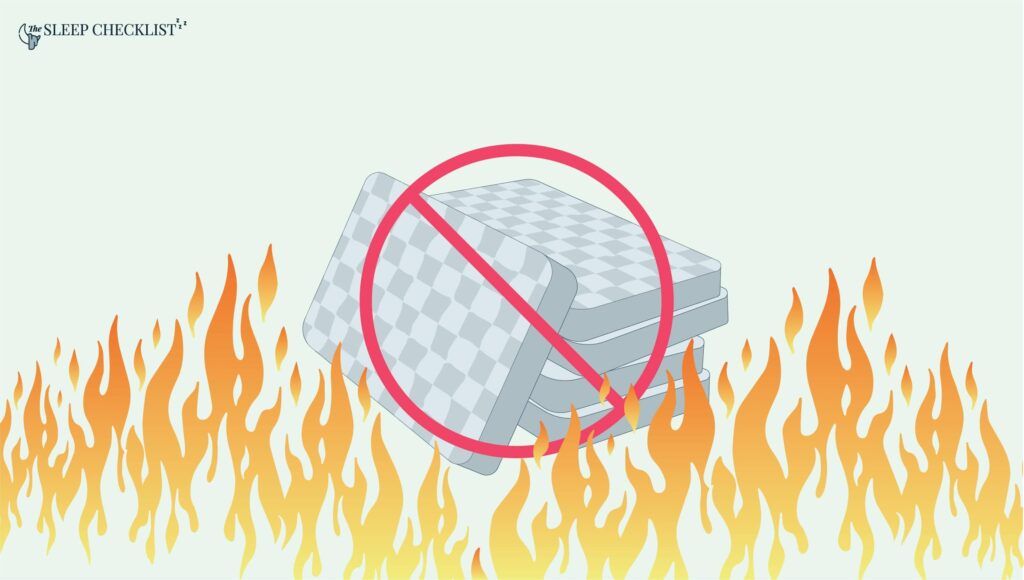
Fibreglass is used in mattresses to comply with flame retardant regulations. It does its job efficiently in suppressing the fire. But it comes with a risk to the health of people exposed to it. While there are no current regulations for using fibreglass as a fire retardant, there are ongoing litigations and class action suits against these manufacturers.
You can check if your mattress does contain fibreglass using the tips discussed above.
5 Sources
- Rajak, D. K., Wagh, P. H., & Linul, E. (2021, November). Manufacturing Technologies of Carbon/Glass Fiber-Reinforced Polymer Composites and Their Properties: A Review. Retrieved from National Center for Biotechnology Information:
https://www.ncbi.nlm.nih.gov/pmc/articles/PMC8588351/ - Sripaiboonkij, P., Sripaiboonkij, N., Phanprasit, W., & Jaakkola, M. S. (2009). Respiratory and skin health among glass microfiber production workers: a cross-sectional study. Retrieved from National Center for Biotechnology Information:
https://www.ncbi.nlm.nih.gov/pmc/articles/PMC2739167/ - Fiberglass. (n.d.). Retrieved from Washington State Department of Health:
https://doh.wa.gov/community-and-environment/air-quality/indoor-air/fiberglass - What is a HEPA filter?. (n.d.). Retrieved from United States Environmental Protection Agency:
https://www.epa.gov/indoor-air-quality-iaq/what-hepa-filter - Wagner, J., Fowles, J., & Barreau, a. T. (2022, February). Fiberglass and Other Flame-Resistant Fibers in Mattress Covers. Retrieved from National Center for Biotechnology Information:
https://www.ncbi.nlm.nih.gov/pmc/articles/PMC8835476/#B1-ijerph-19-01695


